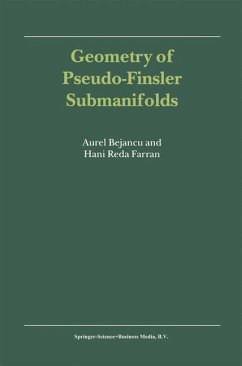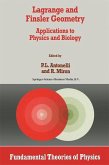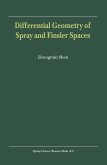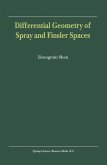Finsler geometry is the most natural generalization of Riemannian geo metry. It started in 1918 when P. Finsler [1] wrote his thesis on curves and surfaces in what he called generalized metric spaces. Studying the geometry of those spaces (which where named Finsler spaces or Finsler manifolds) became an area of active research. Many important results on the subject have been brought together in several monographs (cf. , H. Rund [3], G. Asanov [1], M. Matsumoto [6], A. Bejancu [8], P. L. Antonelli, R. S. Ingar den and M. Matsumoto [1], M. Abate and G. Patrizio [1] and R. Miron [3]) . However, the present book is the first in the literature that is entirely de voted to studying the geometry of submanifolds of a Finsler manifold. Our exposition is also different in many other respects. For example, we work on pseudo-Finsler manifolds where in general the Finsler metric is only non degenerate (rather than on the particular case of Finsler manifolds where the metric is positive definite). This is absolutely necessary for physical and biological applications of the subject. Secondly, we combine in our study both the classical coordinate approach and the modern coordinate-free ap proach. Thirdly, our pseudo-Finsler manifolds F = (M, M', F ) are such that the geometric objects under study are defined on an open submani fold M' of the tangent bundle T M, where M' need not be equal to the entire TMo = TMO(M).








